On Monday August 8, we began our morning by visiting Collegiate of St Gertrude in Nivelles, a Romanesque abbey-church which dates back to the 11th Century. Over the centuries the church has undergone major expansions and renovations and is still under renovation today. In 1940, the church had a large steeple that rose from the center of the front of the church with two smaller towers on either side. Here’s a model of the church at that time.
*Note: Upon further investigation, and information from my friend Michele, I learned that this Hilmeltrude was Charlemagne’s first “relationship” sometimes regarded as a concubinage one, but may have been an actual legalized marriage. He “put her aside” to marry a young girl by the name of Desiderata, a Lombard princess. He also had several other wives as the years went on, including Hildegard, producing many children. His relationship with Hilmeltrude did produce his first son named Pepin.
In any case, she was buried in the depths of the church beneath the flooring in the 8th Century and was considered an important figure, certainly by the people of Nivelles. It was also discovered that the Saint for which the church is named - Gertrude, was buried there as well, in a tomb within the flooring of the first church erected there in the 7th Century. There is evidence of her importance and her miracles depicted in various formats throughout the church building.
Belgium is noted for their great collection of cartoonists. Many of these cartoonists are known world-wide and not just locally. The subway stations are filled with their characters and particular cartoon scripts. Also, there are sculptures in parks and street art throughout the city of Charleroi. Here are a few of them.
You can see in this tomb that three monk “companions” were buried together. I don’t remember the story that the guide gave us about them, but she said something about them being killed on their journey to the Abbey and were therefore buried together.
These bells were in the tower that was bombed. Unfortunately, all of them were cracked from the fall, if not from the bombs themselves, and have been replaced. Each bell has the inscription on them of the family that gave the money to have the bell made.
This is Hilmeltrude’s grave. The mirror allows you to see inside.
In this picture you’ll see deep crevices in the flooring marble and a very narrow opening between the stone pillar and a marble column. Supposedly, if you could fit between this narrow opening, you were found to be guiltless and did not need to confess any sins. As you can see from the deep crevices made in the floor, many people squeezed (or at least tried to squeeze) between these objects. I think I have a lot of confessions to make….lol!
Since the church is currently under renovation and wrapped in scaffolding and plastic, I found two pictures on the internet to show the beauty of this church. They are not mine.
Before coming to visit, Michele had asked me what I wanted to see and do. She sent me a list and I noticed on the list names of two towns in particular that stood out - Charleroi and Floreffe. Both being the name of towns near my Elizabeth/West Elizabeth Churches in Pennsylvania, I was intrigued by this and asked if we could visit. So, we took a tour of Charleroi. In fact, it is the closest large town to Biesme and where I arrived by train. Here are some pictures of the city. And yes, there is a connection between the Charleroi in Belgium and the Charleroi in Pennsylvania. I discovered it during the tour of the mine disaster and the memorial to the miners in Charleroi.
When our tour was over, Michele and I went into St Christopher’s Church on the town square. Notice the glass pulpit and the beautiful gold and colored inlaid tiles behind the altar.
Monday evening we had a wonderful BBQ at their home with a mix of garden vegetables and then more tastings of Belgian beer and wine.
On Tuesday morning, Michele and I drove to the ruins of a 12th Century Abbey in Villers, founded by St. Bernard. It is of the same order of monks, the Cistercian Order, that I visited in Fontenay, France. The Abbey in Villers is spectacular. Having a lifespan that stretches through nine Centuries, it is truly inspiring, even if it is now only the ruins that we can see. You’ll perhaps notice in some of the pictures below (although I tried to avoid them) that there are modern pieces of equipment - large black speakers for example, because they will be putting on the Shakespearean play of Romeo and Juliet within the ruins next week. Can you imagine coming to see Romeo and Juliet in such a setting?
Me and my friend, Michele.
Upon entering the Abbey, there is a steel column that runs along the walkway that does a timeline of world events that are important from the date of the founding of this Abbey. There was no way to capture it, but it was very helpful to see how the life of the abbey fit into the grand scheme of world events and how it has spanned the past nine centuries.
In the afternoon, we visited the site of a mining community in Charleroi called Le Boris Du Cazier. Within the complex there is also the Museum of Industry and the Glass Museum, all certainly related to the coal mining industry. It is also the site of a major mining disaster which occurred on August 8, 1956 when a fire broke out within the mine and cost the lives of 262 miners that were down below. These miners were from 12 different nationalities; nearly half of them from Italy. The site brings back to life the conditions that miners endured during the early days of the Industrial Revolution and how they were often exploited by the owners of those mines all the up until the mine permanently closed in the 1960’s.
Coming from Pittsburgh, I know all too well the condition and story of mining life. It didn’t seem to be much different here than back at home. The disaster of the fire also had many children victims, leaving more than 400 of them as orphans. I think the important of this memorial reminds of the necessity of safety features and care of the workers over the greed of profit. I also felt an overwhelming desire for such a site back home in Pittsburgh, as I have for a long time.
Coal mining gave power to the Steel Industry which fueled the Industrial Revolution. It also generated a new industry - glass making. Charleroi became a glass making city as well. Several of the glass blowers left Belgium and came to another Industrial town - Pittsburgh and founded a new community - Charleroi, PA in 1890. Less than thirty years later in 1920, another group came from Floreffe, Belgium and established a glass making company in Pennsylvania, calling their new town, Floreffe, PA. A glass company remained in Floreffe until about the 1970’s.
Here are some pictures from the Glass Museum:
Side note: throughout Charleroi area, you’ll see hills everywhere. These hills are the left over fill from the coal mines. There is one of these hills at the Le Bois Du Crazier. The following day after our visit, this hill was on fire, probably coming from deep within the heart of the leftover coal and the heat of this summer. The local news showed helicopters dousing the flames with buckets of water and firefighters trying to get the blaze under control. Just another example that our actions have lasting consequences, even if we don’t know what they might be, but we need to be careful so that other disasters could be avoided. We also know this in Pennsylvania, as our Centralia mines have been burning for a long time and could burn for another 100 years, affecting the lives of many.
That evening we went to Jardins d’Eau d’Annevoie. These are the gardens of Charles Alexis de Montpellier, the Lord of Chateau d’Annevoie, in 1758. He was inspired by the water that came flowing down from the hillsides. All of the gardens feature water in some way and are done without machinery using the basic principles of gravity to fill them and enliven them in pools and streams. We went for a stroll around the gardens before the light show against the castle. The gardens are beautiful.
The Castle
As it got dark we settled onto the lawn to watch the story of Charles Alexis de Montpellier and his relationship to the water of the grounds and his creation of the gardens; how he let the “spirit of the waters” speak to him. It was all narrated and sung in French, so I didn’t catch most of it, but that was the general sense of the light show; which was unbelievably wonderful in animation. Here are just some pictures I took of it.
In the photo below you can see a woman standing on the actual balcony of the castle, as she sang a classical piece in French to the animation happening behind her on the walls of the castle. The Lord of the castle, de Montpellier had a strong tie to the church nearby and is, in fact, buried there.
In this photo below you can see the black silhouette of real swans swimming in the lake in front of the castle and the animated picture.
Imagine watching this for 45 minutes using the castle as the backdrop for such a beautiful display. It was truly remarkable and amazing. Below are a few photos of where de Montpellier is buried at the church.
I have been on the go from morning till night with my friends everyday. So, I will try to write another post tomorrow regarding Wednesday’s and Thursday’s discoveries. Then I’m off to London and Dublin for my last week before coming home. Whew! It’s been awesome!
.


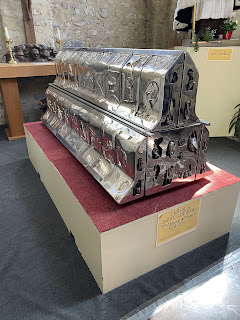

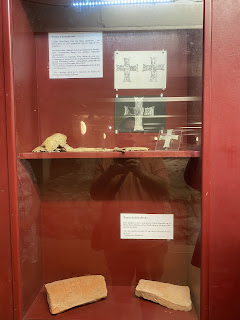























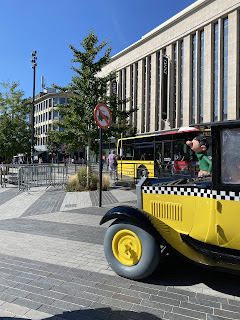





















































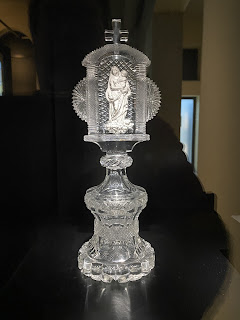














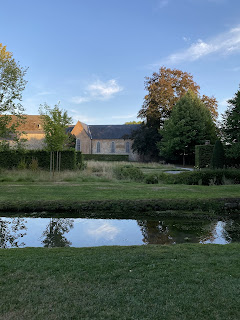















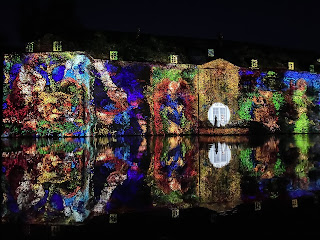














No comments:
Post a Comment